 By Carol Gray, LMT, CST, RPYT, ERYT-200
By Carol Gray, LMT, CST, RPYT, ERYT-200
I recently had a conversation with parents about crying babies and toddlers. They were apartment dwellers who were concerned about disturbing the neighbors.
CRYING! It is, after all, a distress call. It’s disturbing — like having a shrieking smoke alarm in your living room. It’s supposed to attract parental attention. Crying is one of the baby’s main survival skills. It helps a baby tell parents/caregivers that they have an unmet need. Sometimes crying is a pain-coping practice. Other times it is a form of release.
I have always believed that there was nothing more disturbing than the sound of my own baby crying. The sound of someone else’s baby crying, not so disturbing. Unless I’m the one caring for the baby I really can tune it out. And frankly, now that I have achieved grandmother status I care less about what other people think. It’s a great place to be, but I didn’t get here all at once.
Miss Cranky Pants
I grew up in a small, but loud family. We lived close to our neighbors. The climate was warm so we had open windows much of the time. We heard our neighbors. Our neighbors heard us. My little sister was ultra colicky. She cried constantly until sometime after her first birthday. I was eleven at the time. My parents and I took turns holding and walking with her while she cried. Although, my mom did most of the hard-core soothing. I never thought much about whether my sister disturbed the neighbors. After all, she disturbed us a lot more. We had to live with Miss Cranky Pants: an eleven-year-old perspective.
Fly from LA to NY With a Colicky Baby? Sure, No Problem…
My oldest son, Jason, was colicky. I remember fleeing restaurants and other public places when he started to cry. It was kind of like living with a time bomb. I never knew when, exactly, he would go off. I was so afraid of disturbing people. When Jason was three months old I (stupidly) agreed to fly from LA to NY (with a colicky baby!!!) to visit my in-laws and introduce our son to them. My mother-in-law immediately insisted we bring him to a local pediatrician to find out why he cried so much. The diagnosis: completely normal colicky baby. One night during that trip we went to a fancy restaurant with my celebrity father-in-law. On cue, Jason started winding up just as my meal arrived. An older woman at a nearby table recognized my father-in-law and offered to hold and soothe Jason while I finished my dinner. He was calm in her arms. I didn’t have to be embarrassed about disturbing people and, of course, the woman who held him got to hold the grandchild of one of favorite celebrities. She didn’t care whether other people were disturbed. I think this outlook comes with age and experience.
Tantrum in Isle Three
My youngest son, Paul, sustained a brain injury when he was a toddler. His frontal lobes were injured causing poor impulse control, a volatile temper and difficulty modulating his emotions. He was that nine-year-old who threw himself screaming onto the floor at Fred Meyer because we weren’t going to buy whatever it was he wanted in the moment. Perhaps you saw us. He did it a number of times. I think the Paul experience is what pushed me over the edge of caring less about what a bunch of strangers thought about me or my child and more about what was right for us in the moment. Paul really needed to grieve the loss of the Doritos. I needed to be consistent about who made grocery purchase decisions.
Babies Cry in Italy, too
Several years ago my husband and I traveled to Italy with my middle son, Adam, his wife, Jen, and their five month old daughter, Anna. On a memorably long train ride, Anna, cried inconsolably. Jen was worried about disturbing other passengers. I, on the other hand, was less concerned about whether Anna cried on the train. I carried Anna to the vestibule between cars and held her while she cried until she fell asleep. A bonus for me: Since I was carrying the sleeping child, I didn’t have to carry any bags when we changed trains.
Italians are really demonstrative in their love for babies — even when they cry. Italy had the lowest birth rate in Europe at the time. It’s still rock bottom. When I visited the store with my granddaughter in one small town, the shop keepers always greeted Anna/Piccolina. When I went there alone — no such greeting. Grandparents were a dime a dozen. Babies were in short supply. During one of our lunches Anna started to get restless and fussy. The owner of the restaurant came to our table, scooped Anna into his arms and proceeded to entertain her for the rest of our meal. He even carried her into the kitchen.
Power-Criers
Super cranky babies pretty much cry until they’re done no matter what we do to soothe them. Sometimes I meet parents who say their babies cry a lot. I ask if they’ve found anything that helps. They say, “When I pick her up she stops”. That’s normal. The power-criers are in a totally different league. Their parents know it, too. I remember visiting the family of a colicky baby. The baby started to get a little fussy during her Craniosacral Therapy treatment. I always check in with the parents if a baby shows signs of being perturbed. They said (in unison), “This is nothing. You should see [hear] her when she really gets going”.
The White Noise Machine
White noise is sometimes soothing to crying babies. I remember visiting an apartment-dwelling family to treat their newborn. The parents apologized for the large burned spot on their living room carpet. They had discovered that their baby would stop crying if they left the vacuum cleaner running. The vacuum cleaner overheated one day. I guess that’s the day they came up with a new strategy and called me.
Compassion in Coach
Over the years I have spent a lot of time on airplanes. My flights are usually packed and, of course, they wouldn’t be complete without a crying baby or two. What I’ve noticed is that the parents/caregivers of the crying babies seem to be distressed about the crying. The other passengers look way less distressed about it. In fact, the other passengers usually appear to have great compassion for the struggling parent and child.
Our Response
We live in a world where all human babies cry. It really is a universal experience. As parents/caregivers of a crying baby our first inclination is to get the crying to stop. Although, most parents would agree that it’s good for babies and children to express their emotions. So why do we stuff pacifiers into the mouths of screaming children? What kind of message does that send about our interest in what the baby is trying to express? If we do our best to meet our children’s needs and they are still crying, it makes sense to be present with them without attachment to stopping the crying, right?
I sometimes ask the birthing parent, “Did you make noise/vocalize during your labor? If you did, how would it have been if the other people in the room did everything they could to get you to stop making that noise?” Most of the birth-vocalizers will say that would have been unacceptable. Many of them would insert a swear word or two into that sentence.
It’s the same for the baby. When babies and children are in pain, the crying is a pain-coping practice. Crying can actually make the pain less painful.
“I don’t exactly know what’s wrong. I am doing what I know how to do to help you feel better. It’s OK with me if you cry. I am here for you. I won’t leave. When you are through crying I will still be here for you.”
Love,
Carol
About Carol Gray
 Carol is the founder and owner of MamaSpace Yoga. She has been a therapeutic bodyworker in private practice for over 31 years. She specializes in Craniosacral Therapy for pregnant and postpartum people and infants. Carol has spent years developing hands-on techniques to enhance the mobility in pregnant bodies including the bony pelvis, the abdominal organs, the support structures and lower segment of the uterus. She is proud to have pioneered the integration of this gentle manual therapy into prenatal care, the birth place and postpartum care for birthing parents and babies. The goal is to give babies more room to develop, grow and get born. Her specially-designed yoga classes have grown naturally from the roots of bodywork and yoga.
Carol is the founder and owner of MamaSpace Yoga. She has been a therapeutic bodyworker in private practice for over 31 years. She specializes in Craniosacral Therapy for pregnant and postpartum people and infants. Carol has spent years developing hands-on techniques to enhance the mobility in pregnant bodies including the bony pelvis, the abdominal organs, the support structures and lower segment of the uterus. She is proud to have pioneered the integration of this gentle manual therapy into prenatal care, the birth place and postpartum care for birthing parents and babies. The goal is to give babies more room to develop, grow and get born. Her specially-designed yoga classes have grown naturally from the roots of bodywork and yoga.
Carol has dedicated her professional life to supporting expectant and new families by promoting gentle aware birth. She attended births for over 35 years – at first as a doula and from 2000 to 2012 as a midwife. She has since retired from attending births in order to focus on practicing and teaching CST and prenatal yoga. Her many years as a birth worker have forever changed her and her worldview. Those experiences remain an integral part of who she is as a therapist and teacher.
Carol is the founder and director of the The Carol Gray Center for CST Studies®. She teaches high-quality, small group classes that are appropriate for bodyworkers, birth attendants and other health professionals. She is approved by the National Certification Board for Therapeutic Massage and Bodywork (NCBTMB) as a continuing education approved provider.

